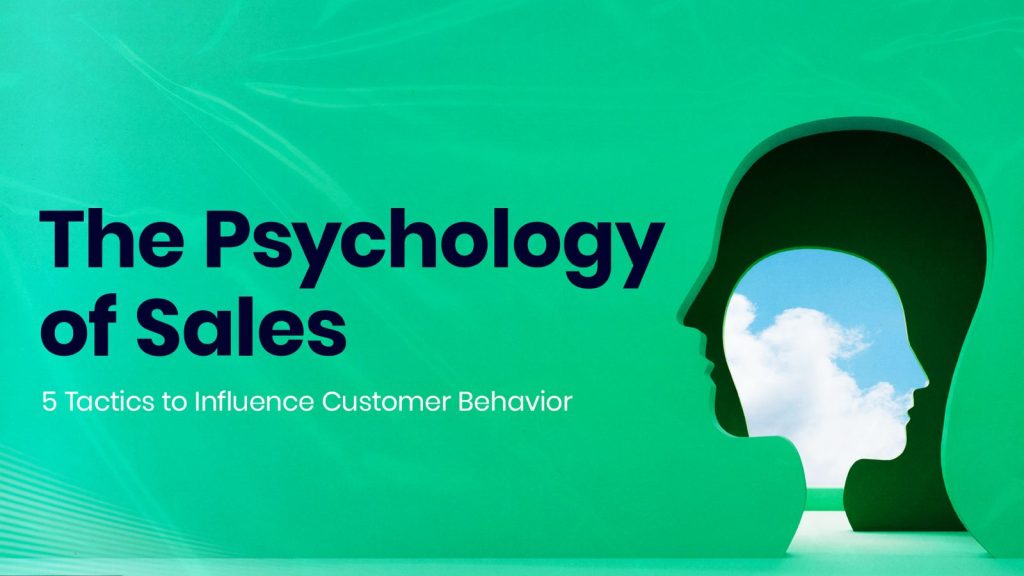
The Psychology of Sales: 5 Tactics to Influence Customer Behavior

As a business owner, you want to do everything you can to drive sales and create a loyal customer base. But how can you influence customer behavior in a way that is ethical and effective? The answer lies in the psychology of sales. By understanding the principles of human psychology, you can use marketing tactics that influence customer decision-making and drive sales. In this blog, we’ll explore five psychology-based marketing tactics that can help you boost your sales.
- Anchoring Effect:
Make Your Products More Appealing
The anchoring effect involves using a high-priced item as an anchor to make other items seem more affordable. For example, a clothing store might display a high-end designer jacket with a high price tag next to more affordable jackets to make the latter seem like a better deal. Companies like Zara and H&M use the anchoring effect in their marketing campaigns. To use the anchoring effect in your marketing strategy, try using images that show a high-priced item alongside more affordable options.
- Scarcity Effect:
Create a Sense of Urgency
The scarcity effect involves creating a sense of urgency or scarcity to encourage customers to make a purchase. For example, a website might display a limited-time offer or a countdown clock to create a sense of urgency and encourage customers to make a purchase before the offer expires. Companies like Amazon and Booking.com use the scarcity effect in their marketing campaigns. To use the scarcity effect in your marketing strategy, try using images that show a limited-time offer or a countdown clock.
- Social Proof:
Leverage the Power of Customer Reviews
The social proof tactic involves using customer reviews or ratings to influence customer decision-making. For example, a restaurant might display positive customer reviews on its website or social media pages to encourage others to dine there. Companies like TripAdvisor and Yelp rely heavily on social proof in their marketing campaigns. To use the social proof tactic in your marketing strategy, try using images that show customer reviews or ratings.
- Reciprocity:
Offer Something of Value to Your Customers
The reciprocity tactic involves offering something of value to customers in exchange for their business. For example, a retail store might offer a free gift with a purchase to encourage customers to make a purchase. Companies like Sephora and Starbucks use the reciprocity tactic in their marketing campaigns. To use the reciprocity tactic in your marketing strategy, try using images that show the free gift or offer.
- Loss Aversion:
Create a Sense of FOMO
The loss aversion tactic involves framing a purchase as a loss if the customer doesn’t take advantage of it. For example, a hotel might offer a discounted room rate for a limited time and frame it as a “limited time offer” that customers will miss out on if they don’t book now. Companies like Expedia and Hotels.com use the loss aversion tactic in their marketing campaigns. To use the loss aversion tactic in your marketing strategy, try using images that show the limited-time offer or discount.
Incorporating these psychology-based marketing tactics into your strategy can help you influence customer behavior and drive sales. But it’s important to use them ethically and transparently and to keep the customer’s best interests in mind. By understanding these tactics and using them in a thoughtful and strategic way, you can build a loyal customer base and achieve your business goals.
At inssain, we specialize in creating innovative and effective marketing strategies that help businesses succeed. Our professional, simple, friendly, and creative approach ensures that we deliver customized solutions that meet your unique needs. If you need help incorporating these tactics into your marketing strategy, contact us today, and let us help you boost your sales.




